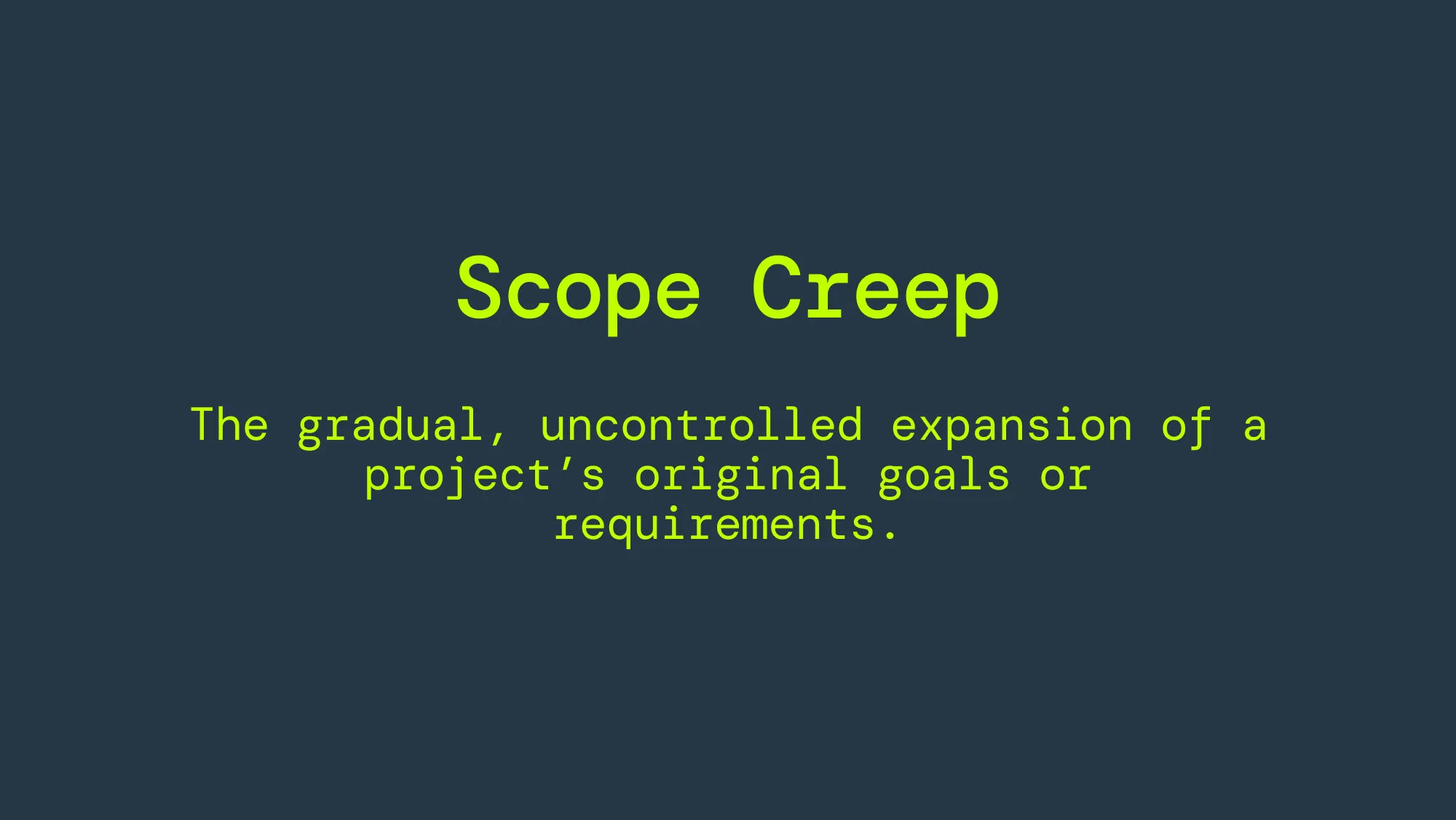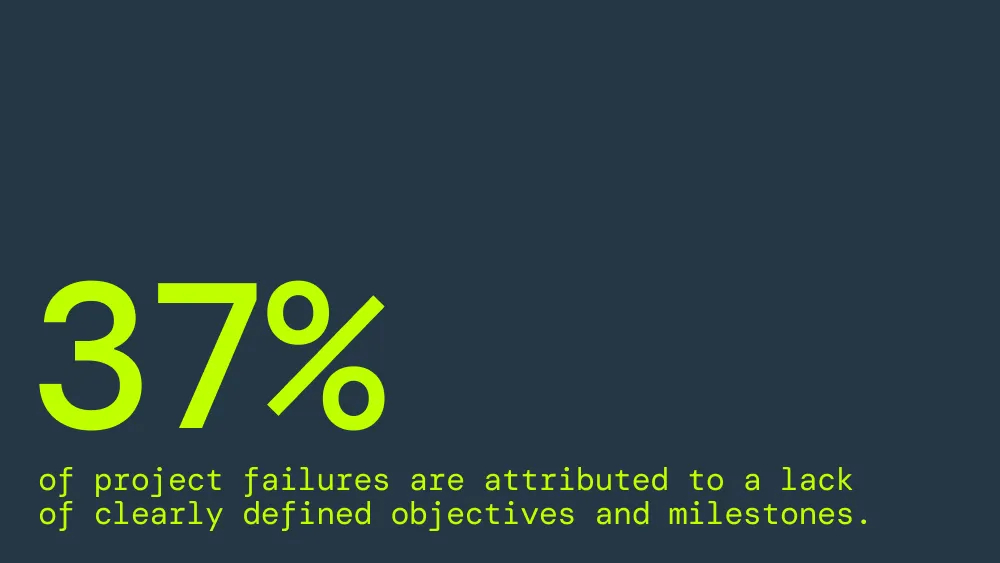What is scope creep, and why are project managers so scared of it?

Learn how to stop scope creep from derailing your project’s timeline.
Okay, we’ll admit maybe “scared” is an exaggeration, but based on the sheer amount of jokes, warnings, and educational resources related to managing scope creep, it’s clear it's a top priority for project teams to avoid it at all costs.
So today, we are going to explain what scope creep is, where the term came from, and ways to keep it at bay.
What is scope creep?
Scope creep refers to the gradual, uncontrolled expansion of a project’s original goals or requirements.
It happens when additional tasks that must be completed, features, or objectives are added without corresponding increases in time, budget, or resources. What starts as a small addition can escalate and significantly disrupt the project schedule, inflate cost overruns, or even lead to failure in delivering the intended outcome.

For example, consider a project where the initial scope includes basic functionality for user login and data reporting. Expanding the scope might occur if stakeholders decide mid-project to add advanced analytics, mobile compatibility, and integration with external systems—none of which were part of the original plan. Without adjusting the budget or timeline, the project is at risk of running over time or budget.
Common causes of scope creep include poorly defined project goals, inadequate planning, or unchecked stakeholder requests. When the original scope is not clearly documented, or when there’s a lack of a solid control process, additional tasks can sneak in under the radar.
Where did the term scope creep come from?
The term scope creep emerged in the 1980s as project management became more formalized.
It was initially linked to software development and construction and highlighted the risks of unapproved changes in tightly controlled project plan phases. As project management evolved, especially with flexible methodologies like Agile, managing scope creep became a widely recognized challenge across industries.
As for why they used the words “scope” and “creep,” scope refers to the boundaries and objectives defined at the start of a project—what needs to be achieved within a specific time, budget, and resource allocation. The term creep was chosen because it describes the slow, often unnoticed way these boundaries expand over time, with additional tasks or features sneaking in, creating significant project challenges
The term captures how small, incremental changes can quietly accumulate and disrupt a project’s progress.
How does scope creep sneak in?
Scope creep typically sneaks into a project due to poorly defined goals, inadequate planning, and unchecked stakeholder requests. A staggering 37% of project failures are attributed to a lack of clearly defined objectives and milestones
Changes can start small, like a project sponsor asking for “one more feature” or team members misunderstanding the project plan, but these seemingly minor additions quickly add up, leading to missed deadlines and cost overruns.

When to say yes or no to changes
So now that you know the issues scope creep can cause for your project teams - how can you identify when it is happening and how do you know when to say no?
Here are some key questions to ask before approving or rejecting a change request:
Does this change align with the projects goals?
Will this change support the project’s original objectives and stay within the agreed-upon scope? A study by the Project Management Institute (PMI) found that 37% of project failures come from unclear objectives. If the change doesn’t fit the goals, it might be scope creep.
What impact will this change have on time and resources?
How will this change affect the project’s schedule, budget, and available resources? Using the Project Management Triangle (time, cost, quality) to evaluate the impact is critical. If the change stretches your resources without sufficient benefit, it’s time to say no.
Is this change essential to the project’s success?
Is the requested change necessary to achieve the project’s core deliverables? If not, it could derail your progress. Poor planning and unnecessary changes are major causes of scope creep in projects.
Do I already have a formal process for managing changes?
Do you have a structured change control process in place? Without a formal system, it’s hard to manage change requests, and scope creep can take over. The PMI stresses that this process is essential for keeping the project on track.
Is there an alternative solution?
Could you address the request in a different way without adding extra scope? Sometimes, there are simpler solutions that achieve the same outcome without requiring major changes.
Through answering these questions, you will be able to confidently approve or reject changes while keeping scope creep at bay.

Managing scope creep
In conclusion, scope creep poses a significant risk to project success by gradually expanding a project’s goals beyond its original scope. This often leads to missed deadlines, inflated costs, and reduced quality. By maintaining clear objectives, carefully evaluating changes, and implementing a structured control process, project managers can avoid scope creep from derailing their projects and ensure that the project stays aligned with its initial goals. Tools like a work breakdown structure (WBS) can be helpful in clearly defining the tasks involved to prevent additional tasks from creeping into the project.

Related Articles

Webinar On Demand: Mega Projects & The Road Ahead for Australia’s Engineers with NGNU & Red Fox Advisory
In this live webinar with our customers NGNU and Red Fox Advisory on Mega Projects & The Road Ahead for Australia's Engineers we brought together the directors of engineering and consulting firms to unpack what's changing, what isn't, and what their firms are doing to maximise chances of success going into 2026. Below, we share key insights from the webinar.

SHIFT Conference: 2026 Predictions for Software Consulting
Projectworks hosted its first virtual conference, SHIFT, for high growth US software consulting firms looking to think strategically about how they integrate AI into their internal systems, inspire culture, and standing out in 2026. Below you can catch the replay’s and key predictions from software consulting leaders.
